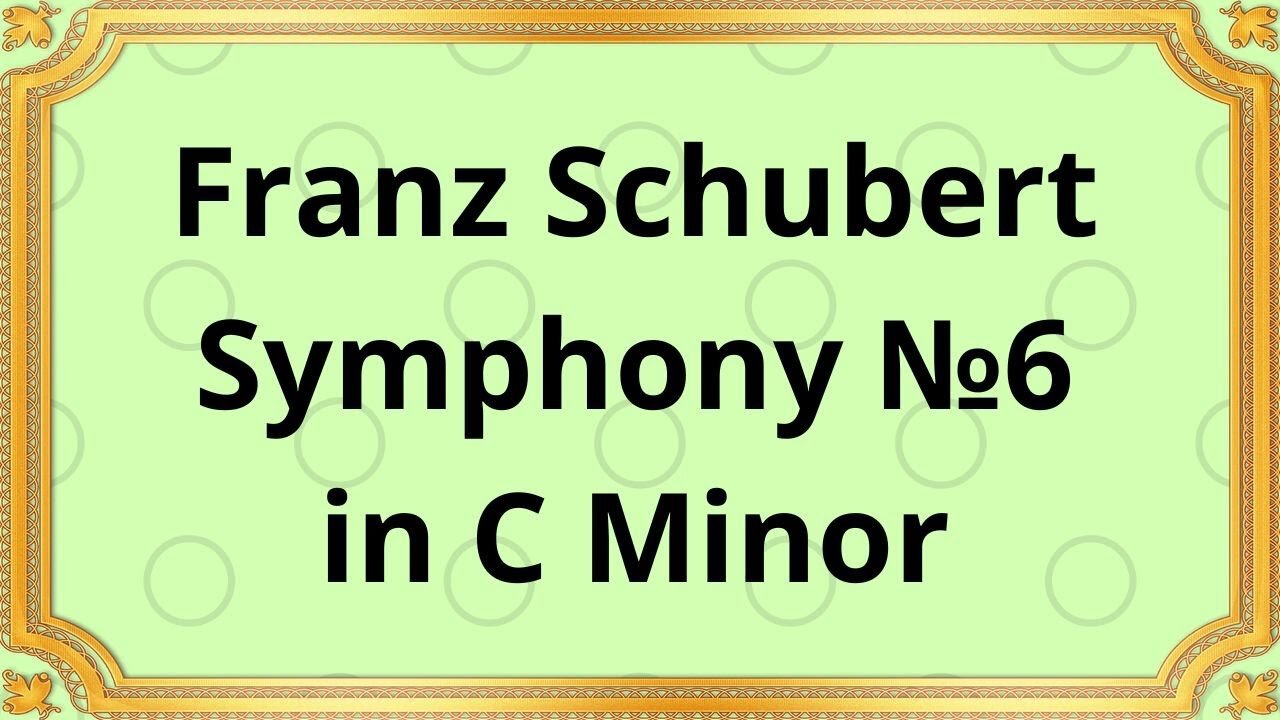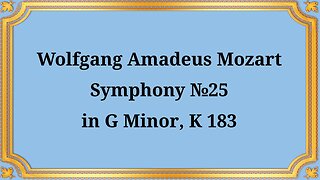Premium Only Content

Franz Schubert Symphony №6 in C Minor
#classicalmusic #FranzSchubert #SymphonyNo6 #Cminor #musicalcomposition #VienneseClassical #orchestralmusic #Romanticera #symphony #SchubertSymphony
Bavarian Radio Symphony Orchestra; Alphonse Dressel
Franz Schubert, a prominent Austrian composer of the Romantic era, created a treasure trove of musical compositions that have stood the test of time. One such masterpiece is his Symphony No. 6 in C Minor.
Franz Schubert composed his Symphony No. 6, also known as the "Little C Major Symphony," in 1817 when he was just 20 years old. It was a time when the symphonic form was dominated by the works of Beethoven, and Schubert's symphony emerged as a powerful testament to his own unique musical voice. Although it was not performed during Schubert's lifetime, it was rediscovered and premiered in 1828, a year after his death, by Felix Mendelssohn.
Musical Structure:
1. Allegro moderato: The symphony opens with a bold and dramatic introduction, setting the stage for the emotional journey that lies ahead. The main theme is presented, showcasing Schubert's gift for expressive melodies.
2. Andante: The second movement unfolds with a serene and lyrical melody, evoking a sense of tranquility and introspection. Schubert's use of delicate orchestration and harmonic richness adds depth and emotional resonance to this section.
3. Scherzo: The third movement bursts forth with energy and vitality, characterized by its lively and playful rhythm. The symphony's tempo quickens, showcasing Schubert's ability to seamlessly transition between contrasting moods and tempos.
4. Allegro moderato: The final movement returns to the symphony's opening theme, bringing the composition full circle. Schubert expertly weaves together various motifs, building tension and anticipation, before culminating in a triumphant and powerful conclusion.
Schubert's Symphony No. 6 in C Minor holds a significant place in the repertoire of classical music. Its harmonic richness, melodic beauty, and emotional depth have captivated audiences for centuries. The symphony's exploration of contrasting moods and its seamless transitions between sections showcase Schubert's mastery of musical storytelling.
Additionally, Symphony No. 6 serves as a bridge between the classical and romantic eras, foreshadowing the grandeur and emotional intensity that would characterize the symphonic works of composers such as Mendelssohn, Schumann, and Brahms.
Conclusion:
Franz Schubert's Symphony No. 6 in C Minor stands as a testament to the composer's prodigious talent and his contribution to the world of classical music. With its expressive melodies, masterful orchestration, and seamless transitions, this symphony continues to inspire and captivate audiences around the globe, reminding us of the enduring power of Schubert's musical genius.
You have the opportunity to support the channel:
https://destream.net/live/RadSiarAl/donate
https://www.buymeacoffee.com/6355radsiaral
-
 16:53
16:53
Classical music_Music Inspiration
27 days agoWolfgang Amadeus Mozart Symphony No. 25 in G minor, K. 183
421 -
 8:19
8:19
MattMorseTV
9 hours ago $4.41 earnedTrump is ACTUALLY DOING IT.
28.9K33 -
 11:30:43
11:30:43
ZWOGs
12 hours ago🔴LIVE IN 1440p! - Tarkov w/ Casey & crgoodw1n, Kingdom Come Deliverance, & More - Come Hang Out!
26.4K5 -
 2:30:56
2:30:56
We Like Shooting
16 hours ago $1.77 earnedWe Like Shooting 625 (Gun Podcast)
19.9K1 -
 1:45:02
1:45:02
Glenn Greenwald
7 hours agoIsrael Slaughters More Journalists, Hiding War Crimes; Trump's Unconstitutional Flag Burning Ban; Glenn Takes Your Questions | SYSTEM UPDATE #504
125K155 -
 1:29:31
1:29:31
Killerperk
4 hours ago $0.74 earnedRoad to BF6. Come hang out #regiment #bf6
26.2K2 -
 4:35:45
4:35:45
Jokeuhl Gaming and Chat
5 hours agoDARKTIDE - Warhammer 40k w/ Nubes Bloobs and AoA
18.4K1 -
 LIVE
LIVE
Cripiechuccles
6 hours ago😁💚💙MOTA MONDAY WITH CRIPIE💚💙 👌SMOKING, GAMING & WATCHING FLICKS!:😁
41 watching -
 36:11
36:11
Stephen Gardner
4 hours ago🔥'Burn ALL TRUMP FLAGS’ says Tim Walz + Democrat CAUGHT rigging own election!
23.1K14 -
 10:10
10:10
robbijan
1 day agoHollywood’s Hidden Messages: Predictive Programming & What’s Next
17.3K18